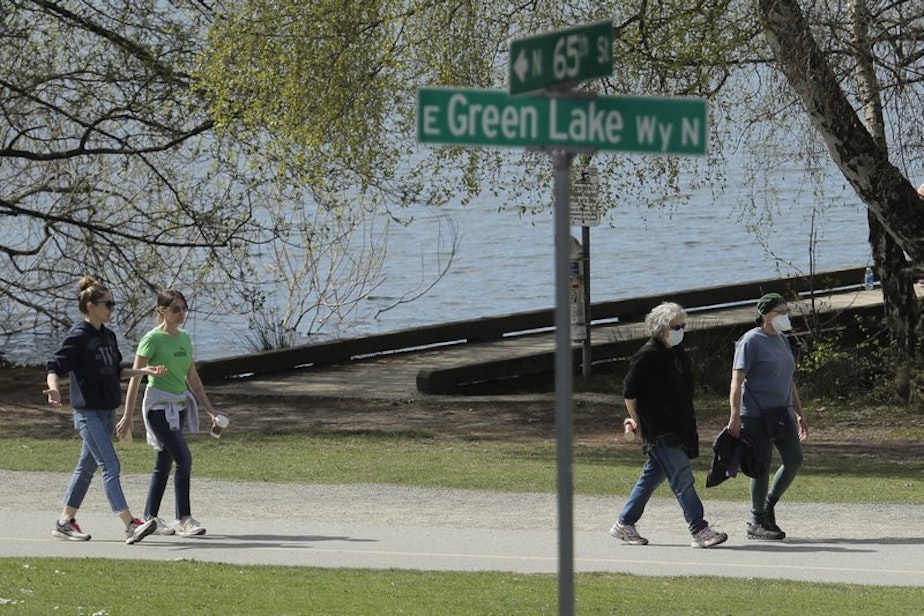Western states band together in response to the coronavirus. And no, you can’t just visit one friend

Washington, Oregon, and California will work together to decide when to reopen their economies. That will depend on the severity of the coronavirus outbreak.
KUOW’s Paige Browning brings us the latest.
This interview has been lightly edited for clarity.
We are starting to get a glimpse of when the economy could reopen. What do we know today?
There is no set date for the West Coast to reopen, but we are seeing some agreed upon criteria. California's governor put out a roadmap today of what it will take to reopen his state. Washington and Oregon will follow a similar playbook. Here is the map to opening:
- The number of hospitalizations must decline.
- Hospitals must be ready for a possible rebound in cases.
- There has to be widespread testing for Covid-19.
- There have to be enough personal protective equipment for health care workers, like gowns and face masks.
We haven't seen a written roadmap like this in Washington, but public officials in the Seattle area, like the health department, have hinted at this same criteria.
Sponsored
I notice you didn't mention a vaccine.
That's not one of the things Washington and California are waiting for now. King County Executive Dow Constantine talked to KUOW's The Record about why:
“It is a fact that we can't continue this indefinitely. We can't continue this until that unknown date in the future when a vaccine will be available, so we're gonna have to find ways to step by step return to something that looks a little bit more like normal."
When, exactly, do officials expect that could be?
Technically, Washington's stay home order ends May 5, but that could still be extended if we haven't met these new criteria. Even then, not everything would reopen at once.
Sponsored
But we're not open yet. Six weeks into this outbreak in Washington, people are starting to feel antsy.
There is some new research that shows opening up too early, or breaking the stay home orders, would have consequences. How so?
If we connect with each other too soon, the virus will spread widely again. It's as simple as that. That's the last thing officials want in Washington, where the curve of cases is trending downward.
There's really interesting new research out of the University of Washington, by anthropology and sociology professors. The headline of their work: "Can’t I please just visit one friend?"
UW professor of anthropology Steven Goodreau says, “It might not seem like a lot, but what we tried to show with our diagrams of networks is once everyone starts doing that — visiting one friend — it quickly reconnects the whole network of households in a way that really we don't think people can appreciate when they're just thinking about their own little local connections."
Sponsored
The diagram shows that if I connect with a friend, and so does that friend, then slowly all of Seattle is actually connected again.
How well are the social distancing orders working in Washington?
Actually, well enough that people who are sick aren't spreading it to very many other people anymore.
In the Seattle area, a person with Covid-19 is on average spreading it to one other person. That's for King, Pierce, and Snohomish counties.
The Washington State Department of Health put out that update today. The agency attributes this completely to the social distancing we've done. So, at least until May 5, the order remains: Stay home, stay healthy. Any economic reopening is weeks away.
Sponsored
This week, federal stimulus checks are starting to arrive. What are you hearing about how people will spend them?
They are not earmarked for one thing. People can spend this money however they choose. For many, it will be to offset bills. For people fortunate to have jobs or a healthy savings, I'm seeing people want to invest it, do an expensive project, or donate the money.
By the way, you will get the money in your account automatically if the IRS already has your social security and direct deposit information. That’s the case if you have filed a tax return in the past year, or you receive social security. Otherwise, you need to go to the IRS website and there will be an online portal to give your direct deposit information.
Listen to the interview by clicking the play button above.





